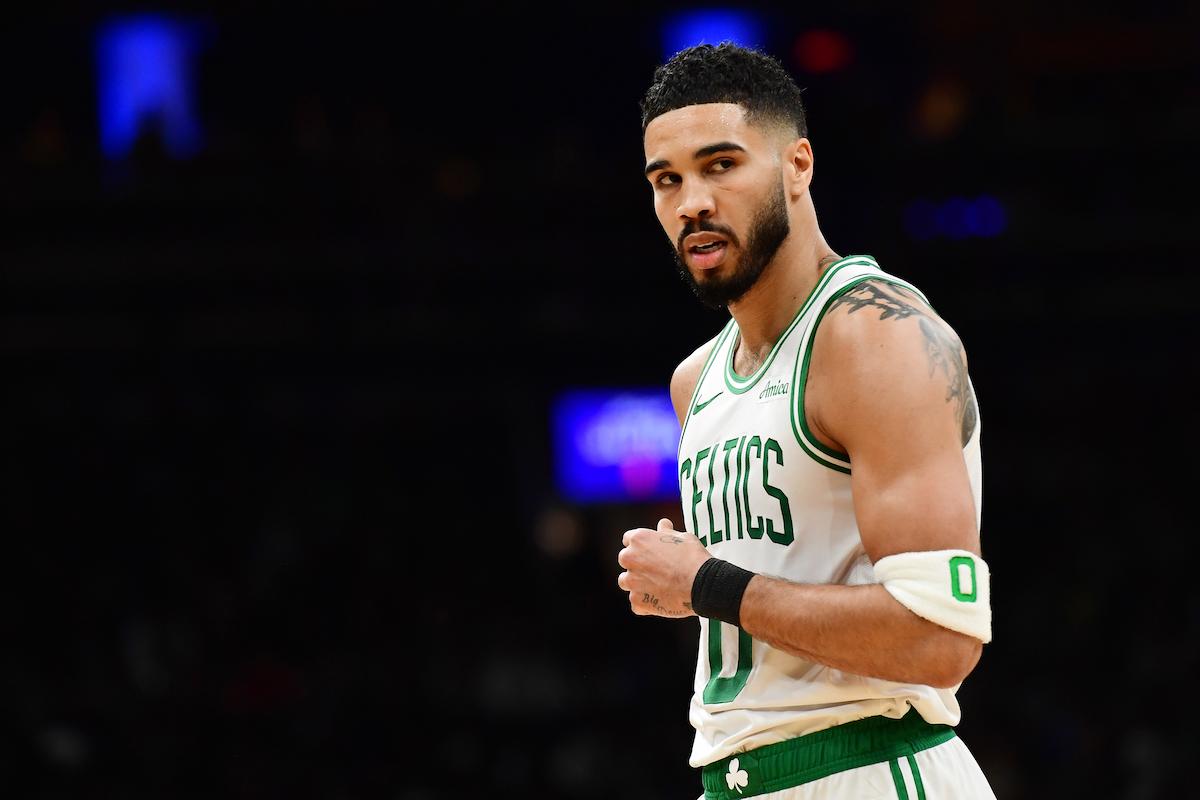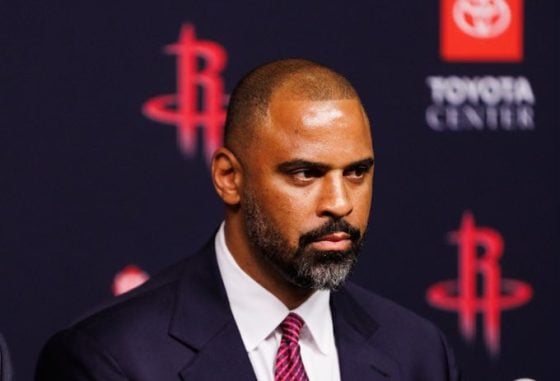The game of basketball is trending away from the post-up. Such a statement isn’t exactly breaking news; watch Inside The NBA on any given night and you’ll hear countless tropes about how the game isn’t played physically down low as much as it used to. Instead, we’ve trended more towards the 3-point shot, and in the NBA Finals, the Boston Celtics were exemplars of that shift. Against the Golden State Warriors, 41.6% of their shots came from downtown.
For a few years now, I’ve always wondered about what would be needed for the pendulum to start swinging back the other direction — away from such a catch-and-shoot heavy attack and more towards the post-up. There are a few obvious things that stand out: players who are dominant down low, the size advantage to make it work, and enough 3-point shooting to space the floor properly around it so that the threat of the kick-out 3-pointer is as alive as the post-up itself.
Doesn’t that team sound an awful lot like the upcoming version of the 2022-23 Boston Celtics? To be clear, we aren’t advocating for them to return to the 1990’s and run the triangle offense. Instead, there could be an opportunity here for Ime Udoka and the staff to incorporate the play type more into the playbook as a spot of relative advantage.
Last season, the Celtics took 286 post-up shots (about 3.5 a game), the twelfth most in the NBA. However, the C’s were the fourth-most efficient team in the shot type, trailing the likes of the Denver Nuggets (fueled by MVP Nikola Jokic) and Brooklyn Nets (with Kevin Durant commanding the lion’s share of their attempts).
Post-ups have been reserved for the league’s elite players these days. Bigs like Jokic and Joel Embiid are so dominant down low that they require those looks, while the Durants, Jayson Tatums and Luke Doncics of the world get there due to mismatch strength on the interior.
Below is a screen grab of the Celtics’ individual post-up numbers from last season, and they show across the board that it’s been a positive play type for the group.
Efficiency and volume are so intrinsically related. There is danger in increasing the volume of post-up attempts because the more something becomes part of your game plan, the more opponents will key into it and spend time taking it away.
To wit, the Celtics have added two players with size and shooting this summer in Danilo Gallinari and Malcolm Brogdon. Gallo is an effective post scorer, as we have covered before, and really is effective at forcing switches with smaller defenders. His one-legged step-back in the mid-post gives off Dirk Nowitzki vibes.
Brogdon, on the other hand, has always been reluctant to score in the post, even with a strong and stocky frame. He logged zero possessions out of post-ups last year, three in 2020-21, and two in 2019-20. We aren’t advocating for Brogdon to suddenly change his stripes, merely that he’s the perfect shooter to surround other post-ups. Brogdon’s catch-and-shoot numbers are strong enough to help space the floor around other guys that operate in the post, while the likes of Derrick White (31.8% C&S) and even Aaron Nesmith (31.1%) struggled last year.
Spacing is crucial to a post-up attack having any impact — particularly with mismatch posts. The court needs to be inverted when a smaller guy goes down low, meaning the center has to be able to lift to the 3-point line to provide spacing. Al Horford, Grant Williams, and Gallinari all provide that type of inversion, making help rotations and traps a little harder for a defense to accomplish. Robert Williams can stand in the opposite dunk spot and have gravity, as he can hammer home any lobs or putbacks that prevent him from being left alone. All other Celtics at the guard and wing spots are competent shooters as well, leaving no weak links to help off.
From there, two questions remain for Ime Udoka and staff when examining whether to throw in a few more post-ups: who do they run them for, and how do they get to them?
The former is an easy question to answer — whoever has the distinct size advantage.
Back in the Brad Stevens era, there were segments of the playbook and wrinkles within all of their sets for Marcus Smart to move into the post. Now that Stevens has moved into the front office, the smaller guards Smart used to play with (Kemba Walker, Kyrie Irving and Isaiah Thomas) are gone and Smart gets the lion’s share of his minutes at the 1. His strength advantage is even more notable than ever before, and I’ve always felt that giving Marcus a few of these opportunities within the playbook help keep him engaged as a ball mover and extra pass thrower.
The playbook has changed a lot from the Stevens days, but you can see how effortlessly it was for the coaching staff to occasionally throw a bone Smart’s way:
Last year, Smart took 25 shots out of post-ups and scored on 48% of them. Those numbers are higher than either of the previous two seasons, but the vast majority of them came from dribble back-ins or recognizing mismatches as opposed to designed play calls. The Eastern Conference has quite a few smaller (or skinnier) guards for Smart to feast upon. Trae Young, Darius Garland, Jalen Brunson, Tyrese Haliburton, and Kyrie Irving all would cede a significant advantage on the block.
The real key to making this work is effective and quick moves from Jayson Tatum and Jaylen Brown. The Grant and Gallo post-ups are less by design and more a means of punishing a defense for a mistake during a possession. The real traction comes from Tatum and Brown learning to thrive in the mid-post area in the way other dominant All-Star wings have in the past.
Jaylen has been exceptional over the last couple of years at coming in each season with an added trick to his bag. While nothing should supersede the need to clean up his handles this summer, adding more confidence to his post-up game wouldn’t hurt. He’s already gotten good at the turnaround fadeaway jumper down low, yet he doesn’t pull it out of his bag a ton. On either block last year, Jaylen turning to his right for a fadeaway scored 50% of the time (10-20), according to Synergy Sports play tracking data.
Tatum has that deep bag of mid-range turnarounds and fades to his credit. He also has the long strides and crafty footwork but doesn’t seem to use them in the post. Last year, the vast majority of his post-up attempts ended in jumpers; 39 of his 59 attempts on the left or right block (non-face-ups) were fadeaways.
Tatum would greatly benefit from adding an up-and-under or a step-thru move to his bag, punishing defenders that anticipate those turnaround jumpers. He should look for inspiration from his idol Kobe Bryant on the impact of a step-through move when the fadeaway is so lethal.
As the stars go, so go the Celtics. That isn’t exactly news. But if Udoka and the entire organization find a way to prioritize this type of play type from their stars, it can have a great deal of impact on the team in the regular and postseason. All the best wings of the last twenty years that win titles have the mid-post isolation bag, from Kawhi Leonard to LeBron James, Kobe Bryant to Dwyane Wade. A little more time with the back to the basket — especially with this roster surrounding them — could be that small step that elevates these stars to an entirely new dimension.






